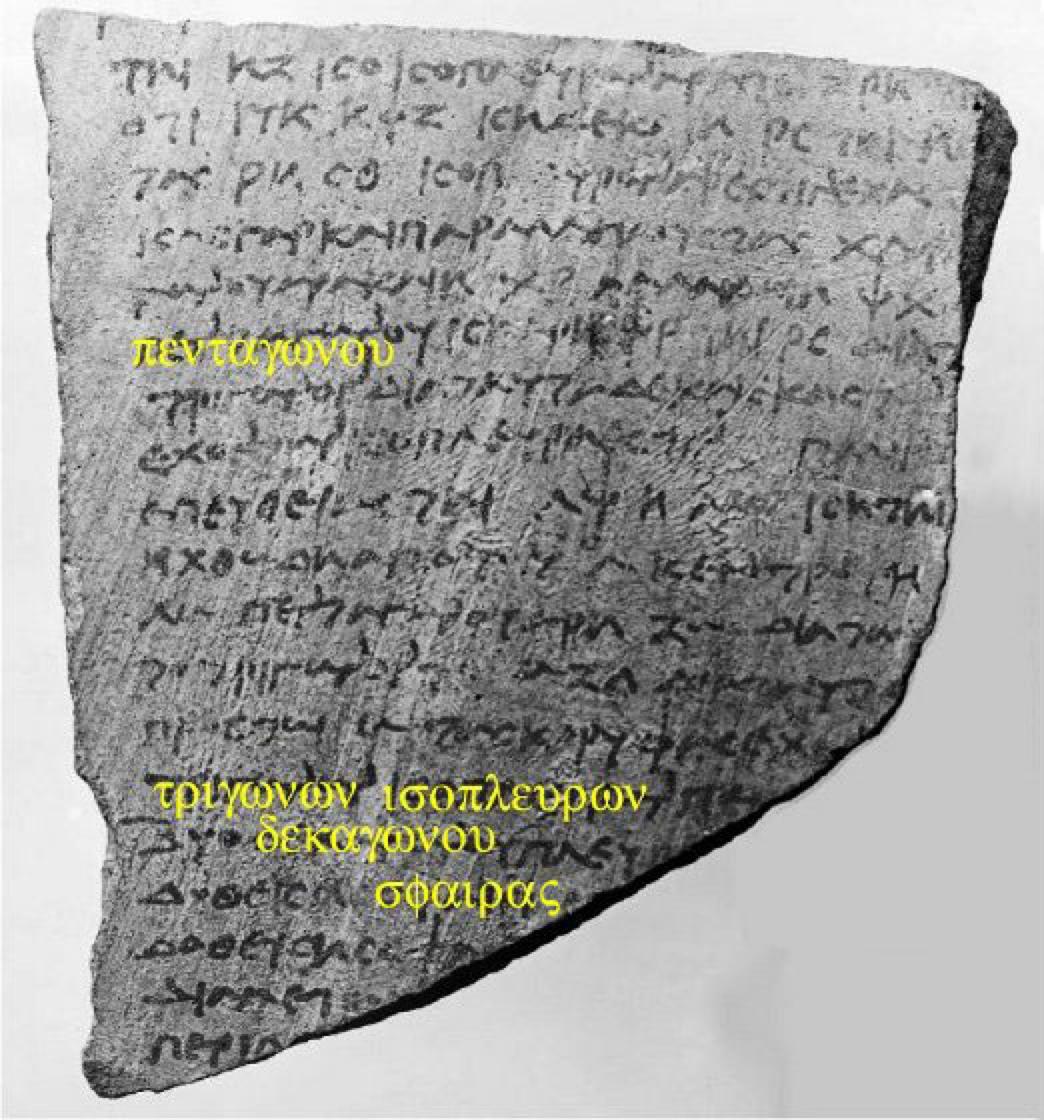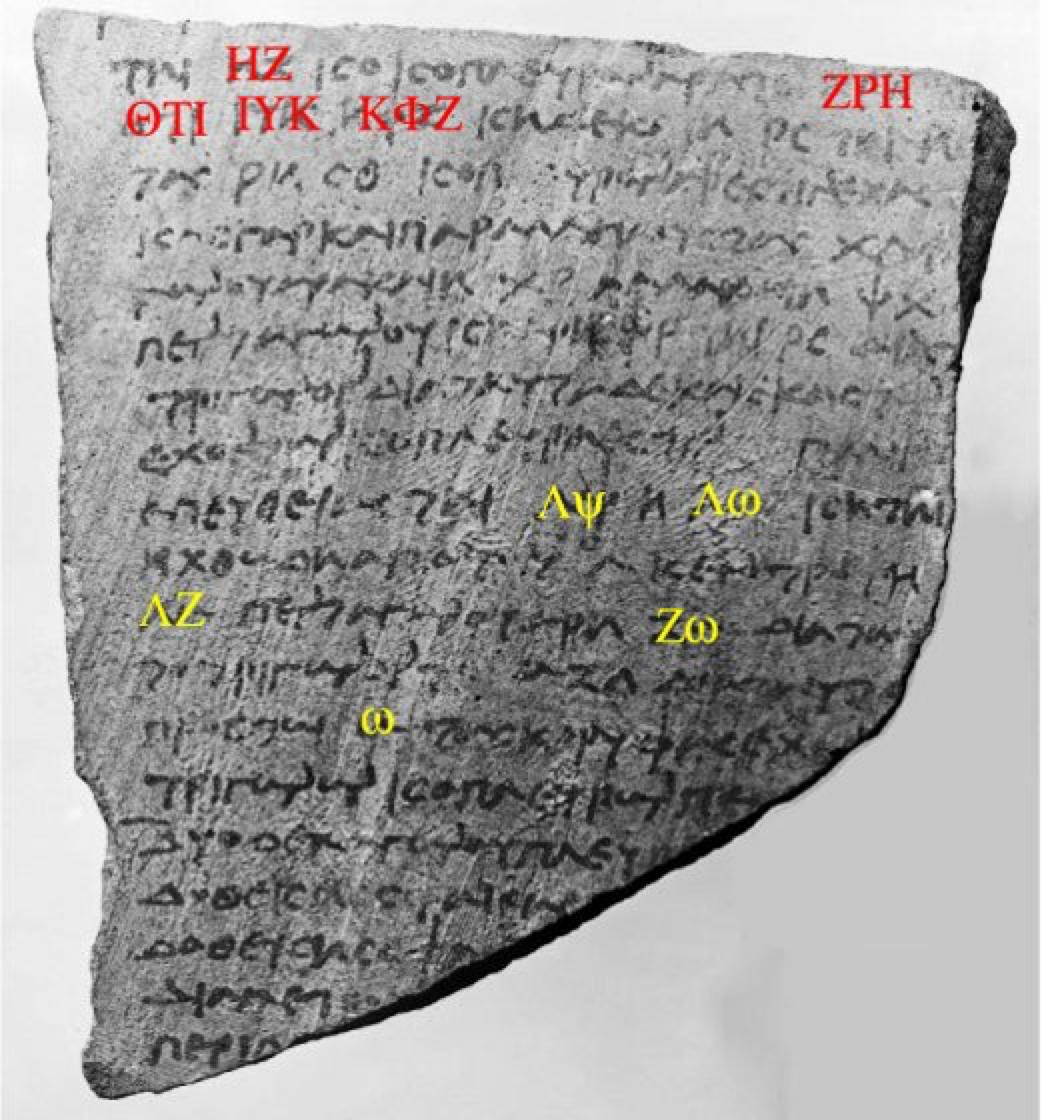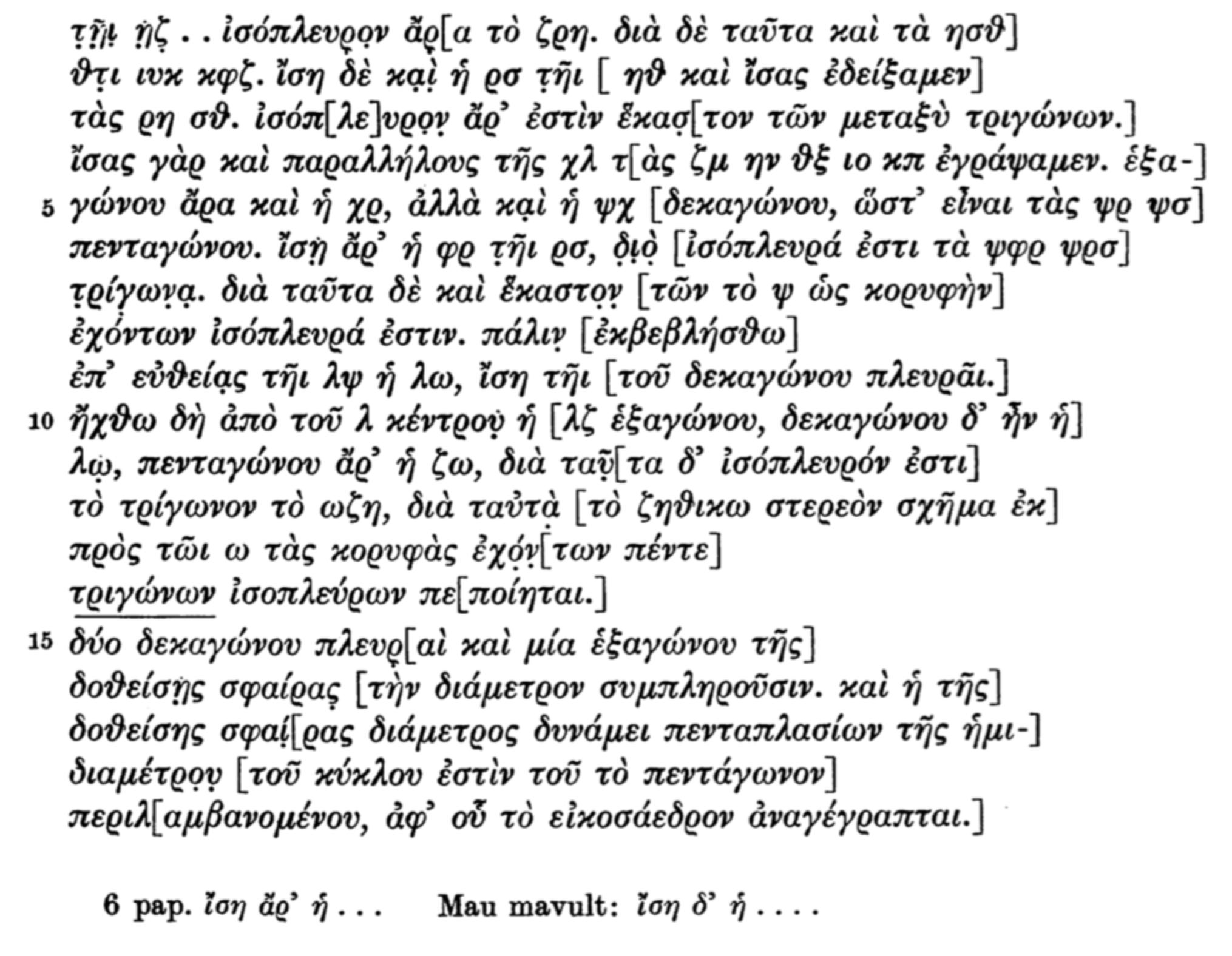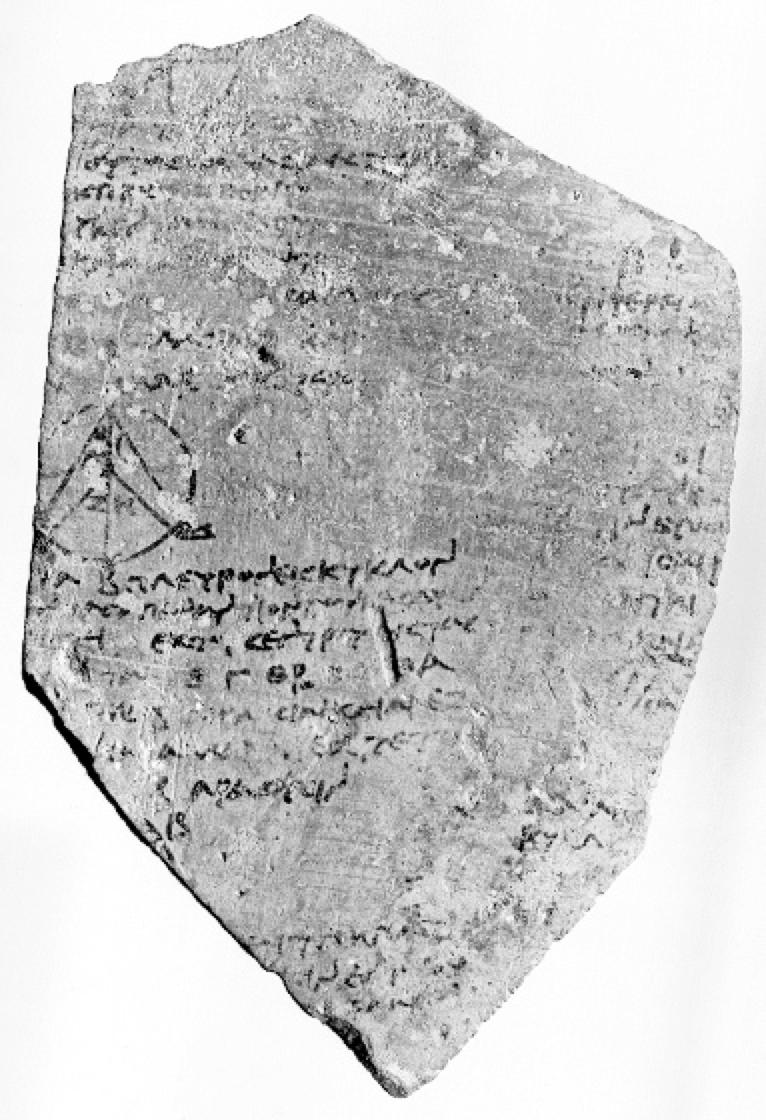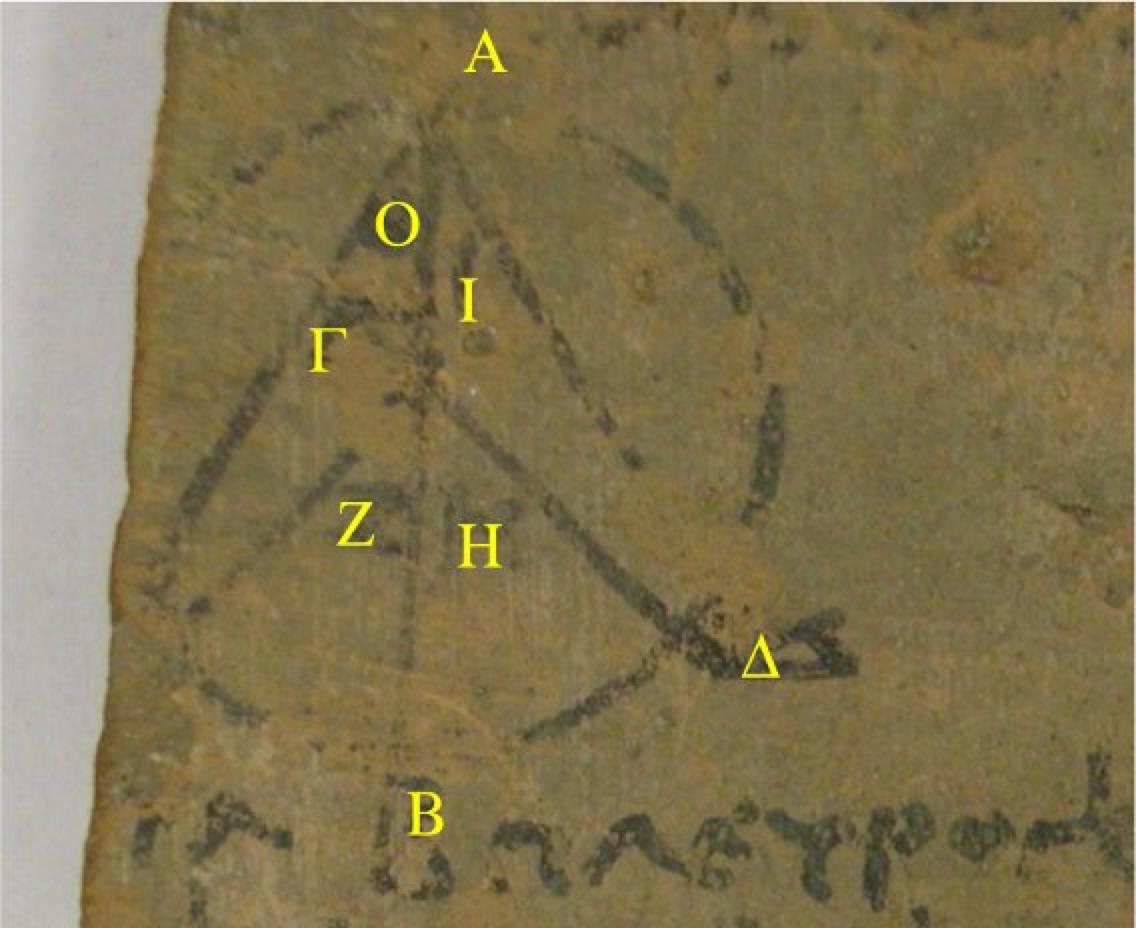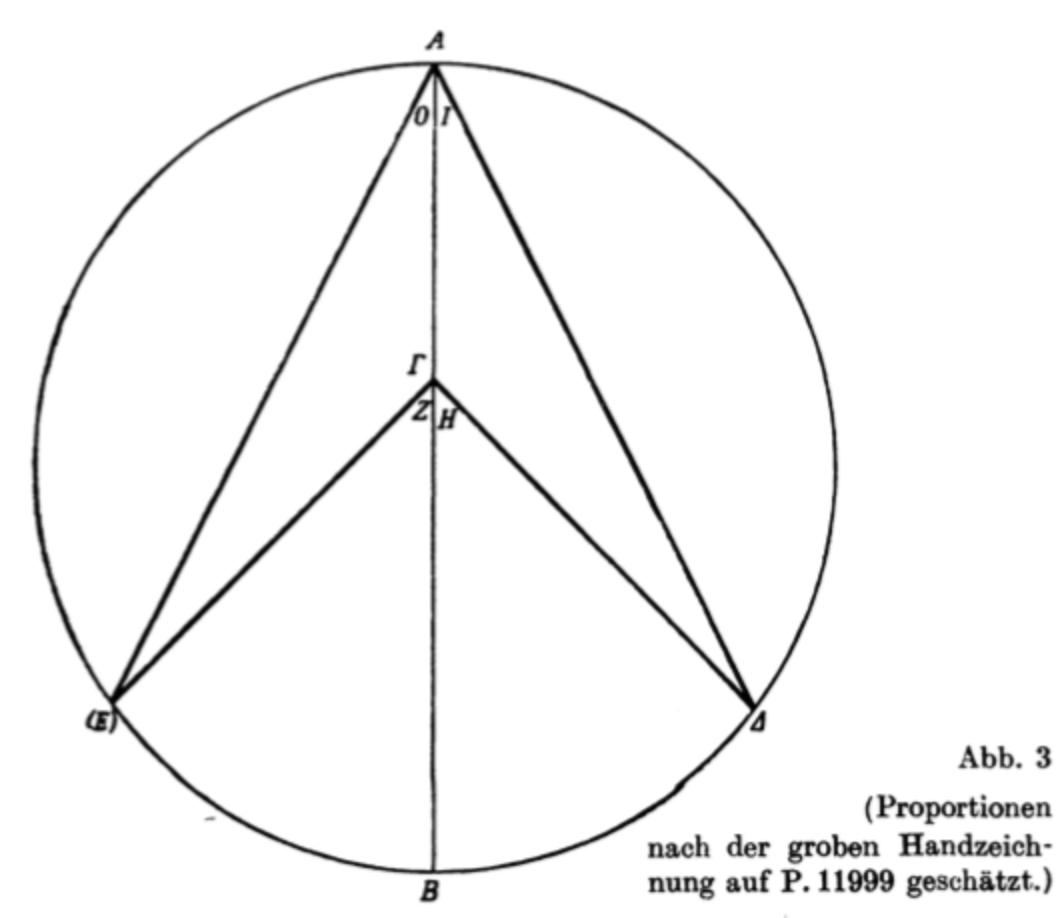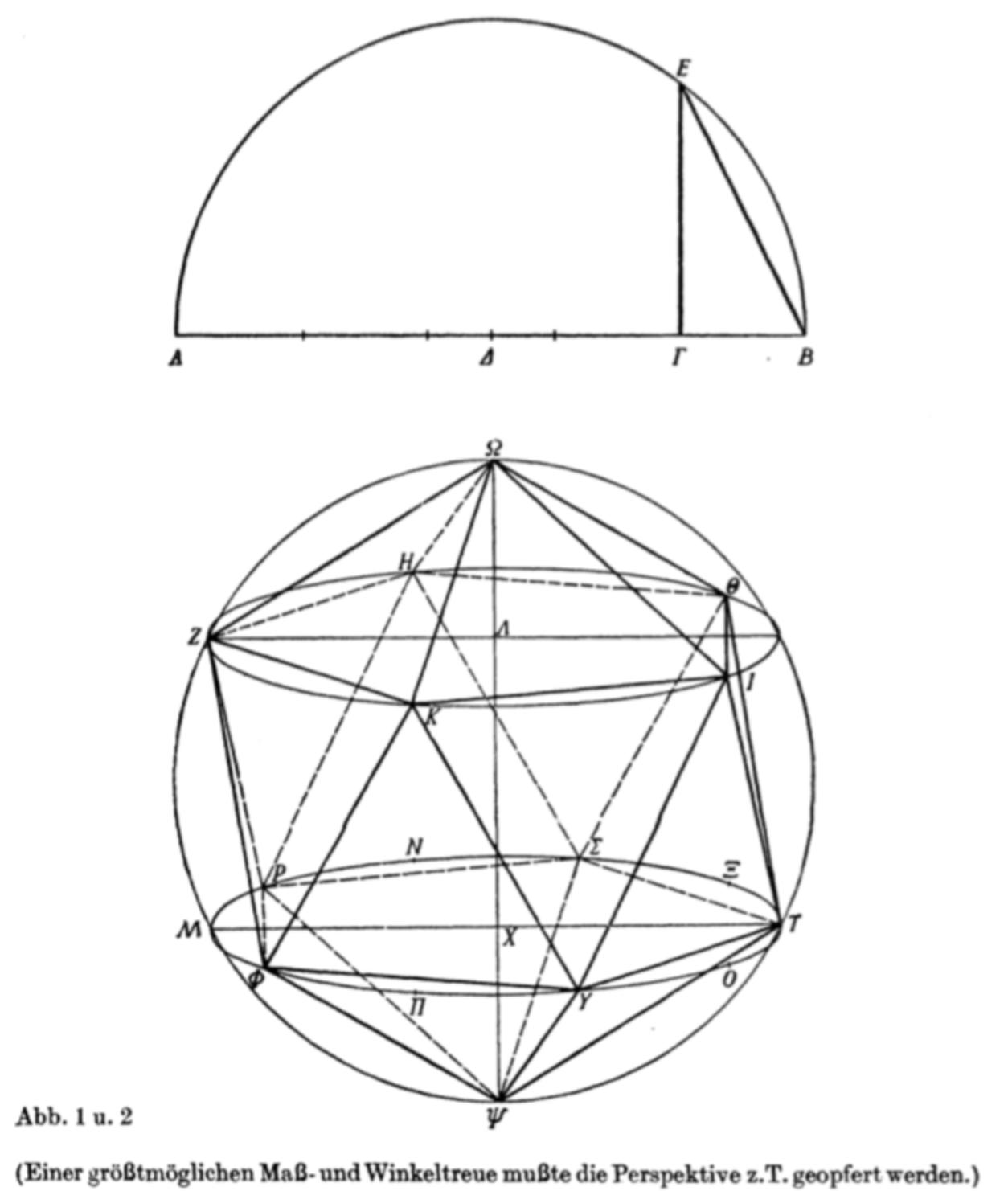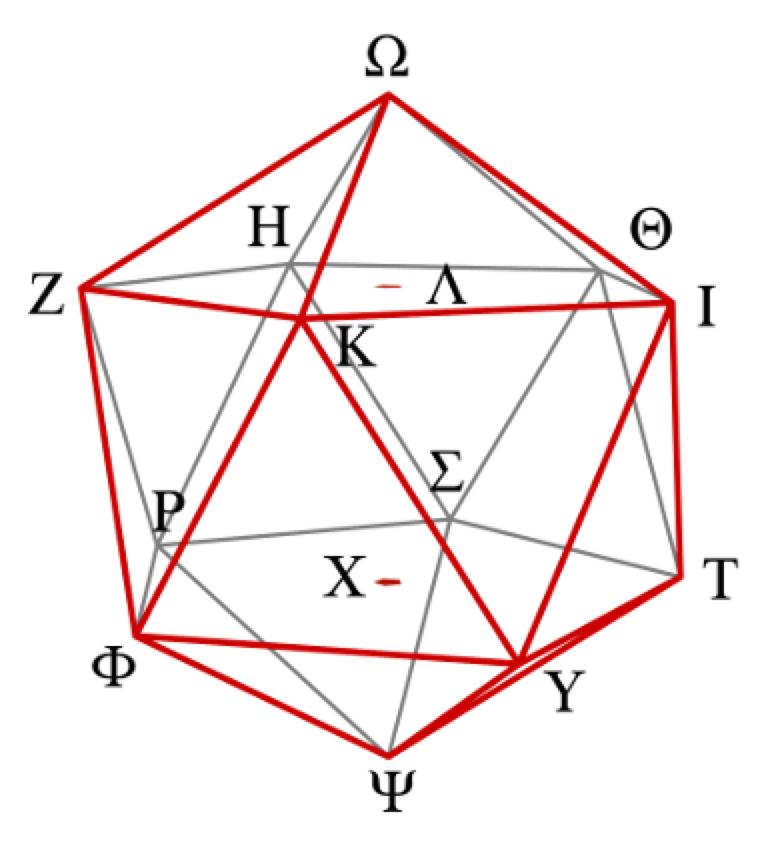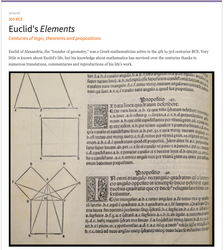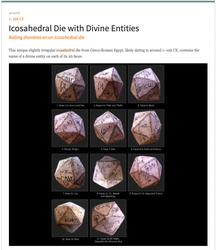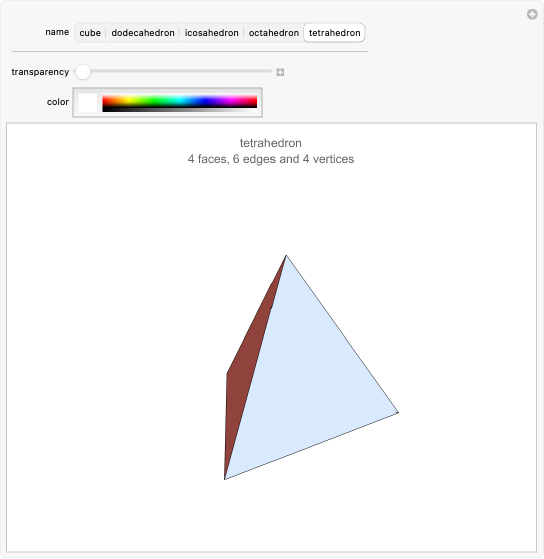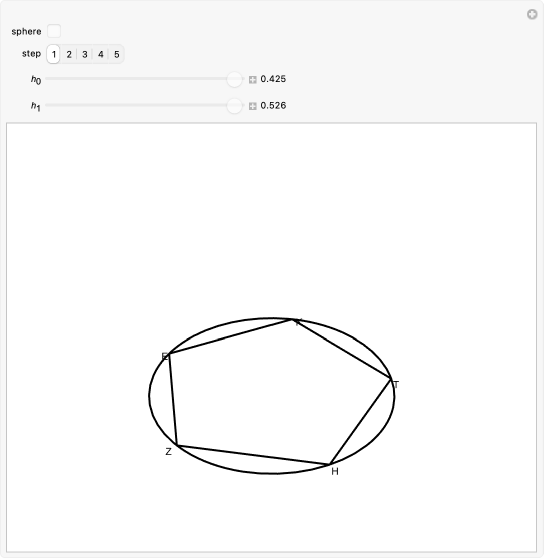around 250–150 BCE
Pottery Sherd Icosahedron Construction
Icosahedron construction on ancient pottery fragments
Six pottery sherds ("sherd" is the preferred archaeological term for a broken pieces of pottery—as opposed to the more common form "shard") found on the island of Elephantine appear to contain a number of exercises concerned with the construction of the regular icosahedron, one of the most sophisticated topics of ancient Greek mathematics.

Pottery sherds containing a mathematical diagram and accompanying text were found on Elephantine Island in Egypt by German archeological expeditions headed by Otto Rubensohn in 1906–1908. They have been dated to around 250–150 BCE and consist of six sherds, known to the Greeks as ostraka. Unlike papyri, whose contents generally recorded things wishing to be preserved, ostraka were scraps that were generally used to record ephemeral information such as tax receipts. Sherd P 12609 in particular contains strong indications that the ostrakon concerned construction of the regular icosahedron as described in Proposition XVI of Euclid's Elements.
